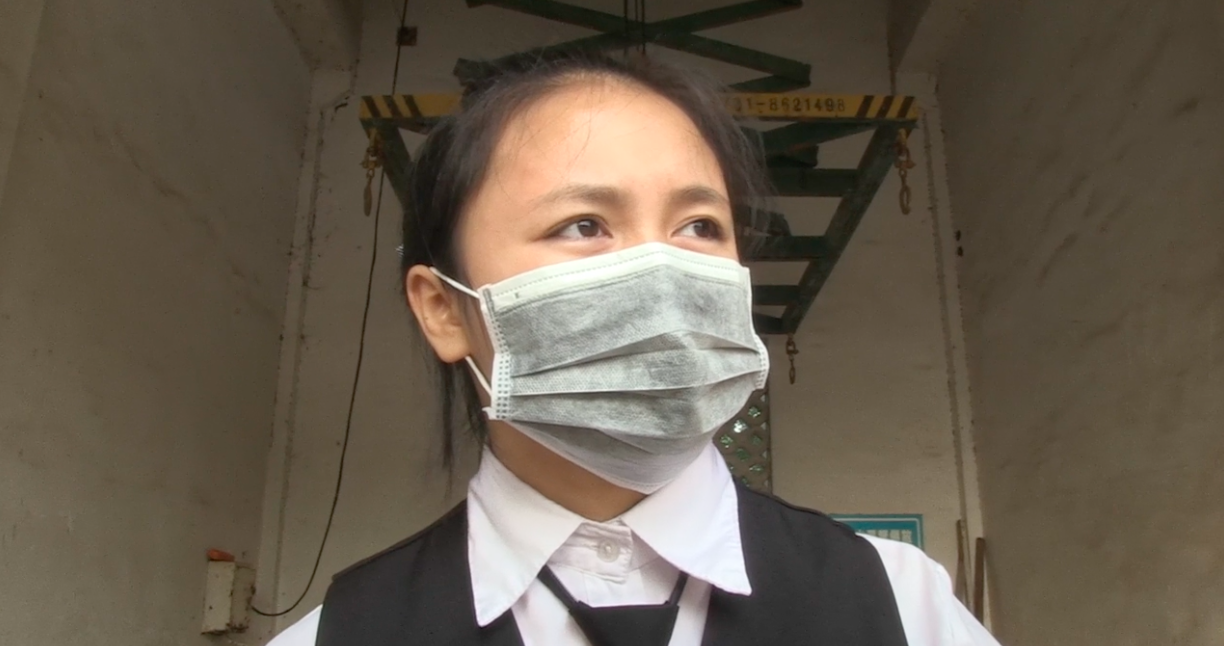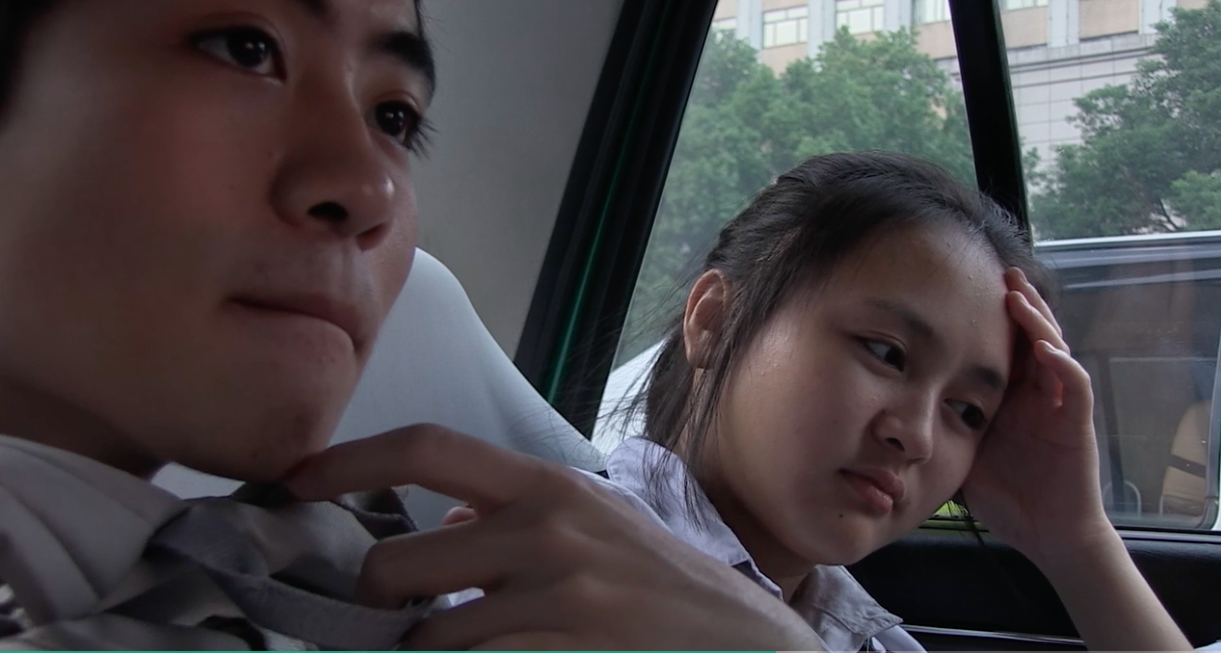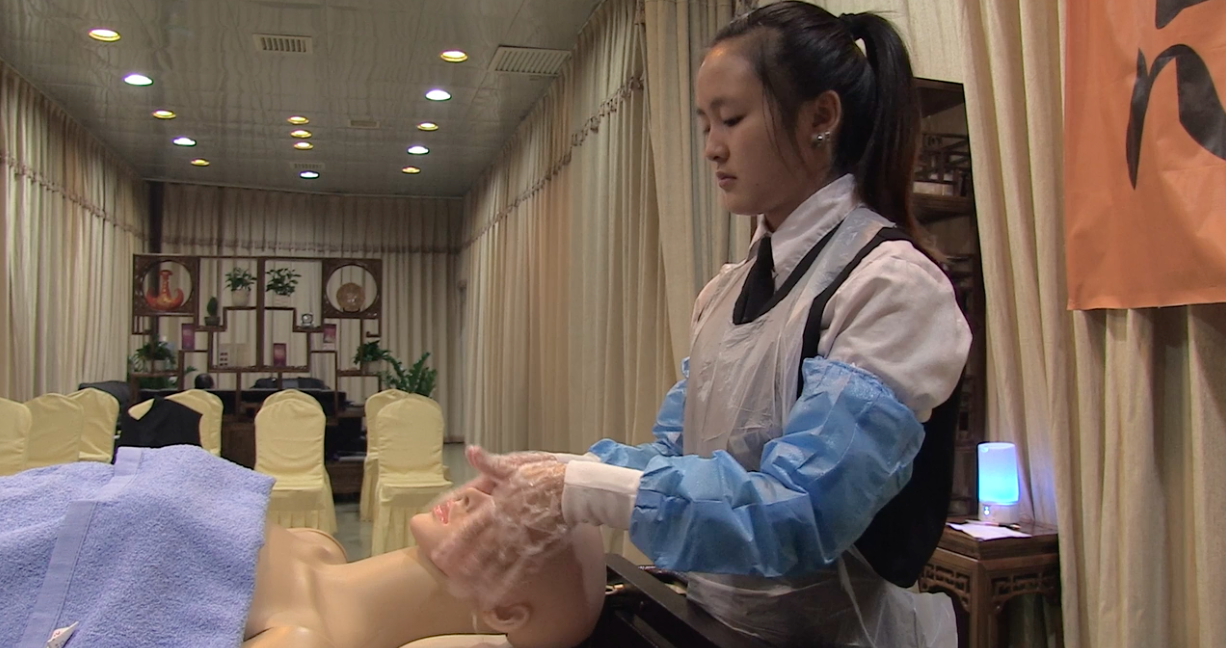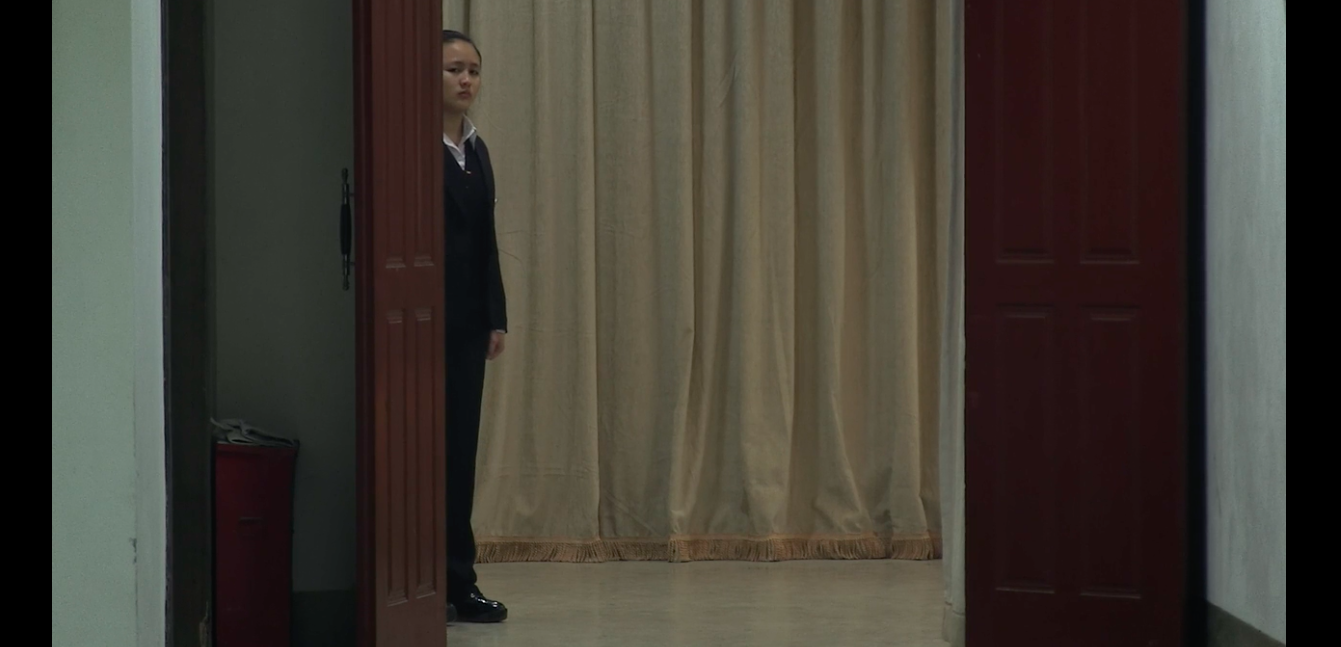If your best friend had stolen your childhood dream, would you relive the nightmare 25 years later? That is the fascinating premise for Sandi Tan’s movie Shirkers, which I saw at the ICA last Saturday. It’s another example of the power of narrative-driven documentary – part memoir and part film within a film, all wrapped up in a mystery.
Read MoreStranger than fiction
Rebel without a pause
Attention all beat junkies and collectors of record art. There are lots of screenings of The Man from Mo'Wax happening this weekend across the UK. This is the story of the rise and fall and resurrection of visionary James Lavelle, who emerged in the Nineties to run one of the most daring and infuential record labels in the world.
Read MoreAlmost Heaven
Imagine being confronted by death on a daily basis when you have your whole life ahead of you? Meet Ying Ling, a 17 year old training to be a mortician at Ming Yang Mountain Funeral Home in Hunan and the star of Carol Slater’s touching documentary Almost Heaven.
She is one of many kids in China who travel far from home to find a job. On the surface, she is your typical person on the cusp of adulthood – naïve, fun-loving and trying to find their place in the world. But in this morbid environment, her gentle character reveals nuances that draw us deeper into the story. And that story prompts us to reflect on our own life and the passing of time.
We see her role-playing the “spa” ritual – learning how to cleanse a corpse, as if washing away the illness and pain of the deceased as they prepare to pass into the next life. Gentle piano plays in the background as employees trim hair, massage the deceased’s face and feet and gently pass a shower head from side to side in a delicate motion.
A supervisor encourages the young trainee to show more emotion. “Feel inside your heart,” she appeals. “The love in you will show.” But Ying Ling doesn't think she can sacrifice herself to this job. She must retain that part of herself.
Her one respite is a cheeky young co-worker, whose long lashes she can't help but pull. He’s a few years older but shares Ying Ling’s playful nature. They hang out, play shoot’em up games and share their hopes for the future. Both are extremely likeable and their flirty scenes together help to lighten the mood. A nice counterpoint.
But then “Lashes” returns home at the behest his family. He also wants to spend more time with his grandparents while he still can. We realise that, behind that carefree exterior, he too is affected by all that he's seen on the job. Ying Ling feels more alone and lost than ever. Her mother won’t even let her come home to pick up winter clothes. You sense that something's got to give.
At an Open City Documentary Festival Q&A in September, the director said of Ying Ling, “I was drawn to her because she would always show every feeling in her face.” And it’s true. She is at once expressive and expressionless, able to convey a sense of confusion, disinterest, anxiety, insecurity … and everything in between. When it seems like Lashes might not be on Skype for their catch-up call, her forlorn look says it all.
Carol Salter on Ying Ling in @AlmostHeavenDoc, 'I was drawn to her because she would always show every feeling in her face.' #OpenCityDocs pic.twitter.com/VzmOK92YSg
— Open City Docs (@OpenCityDocs) September 8, 2017
As a character study, Almost Heaven is compelling stuff. You will smile, you wonder. You may well up and reflect on your own loss; all within seventy-something minutes. The scenes featuring distraught relatives, wailing uncontrollably as they struggle to let go, may be difficult to watch. We can only wonder how Slater managed to capture such intimate and private family moments, however measured they were.
But these scenes are also quite visceral and remind us of what’s at stake in this life. Slater's parents passed away while making this film – clearly, it’s been a journey in terms of her own attitude to death and how to handle loss. The director says her coming-of-age film is universal because it’s about life choices. Here is a reminder to feel joy whenever you can, to make the most of every moment.
Towards the end of the film, we learn that the near-death experience of daily life has also made Ying Ling more determined to spend time with her family. As she says to her father on the phone: “I want to be closer to you before it’s too late.” Another scene where the young girl is on the brink of giggling or crying, you’re not sure which.
And her next stop? Well, let’s just say it’s not a million miles away.
Detroit – 50 years on
This is the full-length version of my entry to Hiive's BFI Film Festival critic competition.
The industry demands instant reactions – faster than ever, it seems. But I think it's important to take time to reflect on important topics like this, and how a filmmaker has chosen to approach it. So here are my considered thoughts, almost two months after I saw the movie. There is much more to say.
Is there a more controversial topic than race today? The repeated abuses of power, systemic prejudice, ingrained privilege… A bold choice for Oscar-winning director Kathryn Bigelow, whose two previous films – The Hurt Locker and Zero Dark Thirty – have been criticised for their questionable degrees of accuracy and propaganda respectively. She herself, has asked: ‘Am I the right person to tell this story?”
What Bigelow does do well on screen is tension, probing the male psyche in moments of heightened conflict. This time round, she drops us in the pressure cooker of Detroit in July 1967 where relations are at breaking point. We see a 12th Street drinking den raided and locals fighting back as police tighten the noose on black liberty.
So the fuse is lit for a five-day series of riots in which 43 people died, 1,183 people were injured and more than 2,000 buildings were damaged or destroyed. The film’s critical moments play out in an annexe of the Algiers Motel, a seedy nightspot where three unarmed black teenagers were shot dead on the same night.
These facts are beyond dispute. What’s not so clear is who pulled which trigger, why and, to some extent, when. Instead, screenwriter Mark Boal and Bigelow have used witness statements and evidence to re-enact events from that fateful night. Much of what we see was improvised, the product of actors coming to set largely not knowing their fate. Their unease is palpable.
John Boyega plays Melvin Dismukes, a composed and dutiful security guard hired to watch a store. Then, there’s Larry Read (Algee Smith), lead singer of The Dramatics, who are about to hit the big time. Julie Hysell (Hannah Murray) and Karen Malloy (Kaitlyn Dever) are good-time girls from Ohio, in the wrong place at the wrong time. Anthony Mackie is Green, Vietnam vet just home from the war. There is no one character to root for. As Bigelow puts it, “You don't know who you are going to emotionally invest in. As in life.”
It is shocking to see how quickly things escalate. A prank with a toy gun in one of the rooms is mistaken for a sniper, triggering pandemonium as local and state police, National Guard and 82nd Airborne descend on the area. Inside, a trio of officers led by a Krauss (a chilling Will Poulter) are hell bent on finding a gun so they line up a few suspects and begin to terrorise them. As John Hersey put it in his Pulitzer Prize-winning account, they are then asked to play the “Death Game” – with tragic consequences.
During that harrowing 45-minute sequence, which took three weeks to film, the viewer is forced right up against the wall beside Larry & co, feeling every moment of fear, helplessness and anguish. Julie Hysell was on set each day and the director looked to her when making these moments as authentic as possible.
Similarly the real-life Melvin was also consulted. But his role as bystander, although effective in conveying that sense of impotence against such systemic brutality, is a wasted opportunity to add more nuance to the character. To what extent was he complicit in the events of that night? In his book Detroit 67, Stuart Cosgrove portrays Melvin as “a sanctimonious man who resents the Dramatics and their flamboyant lifestyle and becomes an accessory to the police violence.” As for Krauss, we can only wonder what made the monster.
Ultimately, justice does not prevail, there is no hero to save the day and only Larry finds minor redemption through the church. But screenwriter Boal says that this is not a story about the power of the individual, “it’s about the power of this rampaging police force to squash individual freedom.”
Bigelow’s hope is that this film will make noise, start a national dialogue and provoke change – Congressman John Conyers’ campaign to end racial profiling being one example. It has definitely stoked the flames. Fifty years on, the struggle continues.
The human cost
Yesterday I went to the opening of the always thoughtful and provocative Frames of Representation (FoR). Now in its second year, the festival aims to support and generate dialogue around emerging practices in documentary cinema. This time round, the theme is "working". The organisers want to "explore the significance of work today and its social, political and cultural themes." It seemed apt, therefore, that the first film be called Machines, and transport viewers to a textile factory in Gujarat, India.
Here, people work in 12-hour shifts for about $3-4, many struggling to keep their eyes open despite all the humming and whirring around them. Their expressionless faces convey a mix of resignation and stoicism. As one worker says: "God gave us hands so we have to work." Another man has travelled more than 1,600km to work and denies that he is being exploited. That's because this is life and people just get on with it … until someone gives them a better option.
First-time feature director Rahul Jain spent two months observing in the factory before beginning to shoot. In all, he and his cinematographer Rodrigo Trejo Villanueva kept rolling for six months, patiently waiting for the right composition and for beauty to reveal itself amid all the drudgery and hardship. Occasionally you feel claustrophobic, at other times incarcerated within each frame.
The film affects the viewer through hypnosis as the camera lingers on each stage of the manufacturing process. Vats of deep-hued colours are wrestled into position, fabric is cut and dyed, patterns are printed, material is guided through rollers by hand and body-like bundles are dumped into wheeled bins with a jarring thud. It must have been quite a task to whittle down the 600-plus hours of footage. However, there is a real light touch to the editing, which gives Machines its metronomic rhythm and sense of suspension in time.
Despite the constant motion in this film, it feels eerily calm throughout. Perhaps that is because the wheels keep turning in this place. Product is made but little appears to be resolved. As soon as one fabric is finished, it's on to the next one without fuss or fanfare. There is no obvious satisfaction in the craft and the film really captures that process of dehumanisation. The workers have themselves become machines.
Voices are minimal in the film. In fact, it must be at least half an hour before we hear one of the workers speak. By that point, you are desperate for someone to "speak their truth" as Jain put it in the Q&A. This was a very personal film for the director, whose maternal grandfather owned a factory like this (in Surat). This world fascinated him, particularly his place in relation to it as someone of privilege. When the time came for the California Institute of Arts film student to find a subject for his mid-term, he started with the one place he knew he could get access.
Jain went into this project with questions and came out with even more. The intention was never to analyse or find answers. It certainly wasn't to produce a piece of cause marketing or start an impact campaign as some members of the audience were calling for. His honesty as a filmmaker was refreshing, particularly when admitting that he made this film because he wanted to … and nothing more. As Jain explained, it's in our nature to seek quick answers to questions. In reality, "there is no black and white," as he put it, "just this long spectrum of grey."
After the sensory overload of the first half of the film, our call for reason is partially answered as a few more voices interject. The factory boss brags about how much more loyal and hungry his workers were a few years ago when they used to earn ten times less than they do now. Towards the end, we step outside and the filmmaker is met by crowds of curious people. A spokesperson asks Jain, "Do you want to save us? Then tell us what to do and we will.” Another simply takes comfort in the fact that we all leave this planet with nothing. Even the rich people.
Admittedly, "you can't expose the sun," as the director argued, particularly in an industry that's reportedly worth $40 billion and built on the backs of cheap labourers. However, I did walk away wanting more from this film than Sundance-winning cinematography and assuming the role of voyeur in Jain's inquiry. Did that mean a stronger narrative or point of view on the situation from Jain? Or was I desperate for action which could lead to better wages and working conditions? If it's the latter then it's down to all of us as accomplices of global capitalism and not the director of a documentary.
He did tell us that he has funding to show the film for a couple of weeks in cinemas around the factory area so let's hope something positive comes from that.
Machines film will be released and distributed by Dogwoof from 19 May. It's definitely worth a look.













